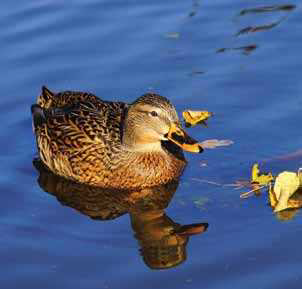Nature Notes
Not many folks think the dead of winter can be productive for nature watching, but when you’re at a lake in western North Carolina it can be one of the very best seasons, especially if you happen to be a birdwatcher.
Species of birds that are attracted to Lake James in winter are often here in great abundance. Different types of gulls rover around the lake in large flocks searching for small fish swimming near the surface. Most of them are ring-billed and Bonaparte’s gulls, but there are a small number of herring gulls that also find their way here.
Double-crested cormorants are another common waterbird in winter. These are often mistaken for geese, but are different in both plumage and behavior. Cormorants are darker than the geese and ducks and loons they resemble. Young birds have pale- colored bellies, but the hooked tip of the bill is distinctive. When feeding, cormorants swim at the surface with their heads underwater as they search for fish. Once prey has been spotted, they dive below and chase down they’re meal, propelling themselves with powerful webbed feet.
Common loons are also spending the winter on the lake and diving for fish in much the same way, but they are larger than cormorants and have broad, straight bills and white throats and flanks as they sit on the water. On foggy, windless mornings it’s not uncommon to hear the loons uttering their mournful, wailing calls that echo across the lake.
Of course the lake also hosts a variety of ducks during the season, but their abundance depends largely on the weather conditions to the north. As winter strengthens its icy grip across the Great Lakes and New England, waterfowl are forced to head south in search of open water. Lake James acts as a stopover for many species, including buffleheads, mallards, ring- necked ducks, gadwalls, redheads and wigeon.
If the winter doldrums have gotten you down, think about lacing up your warm boots, throwing on an extra sweater and coming to the park to enjoy the quiet beauty and variety of waterbirds that don’t mind sharing it.
See you out on the trail!

